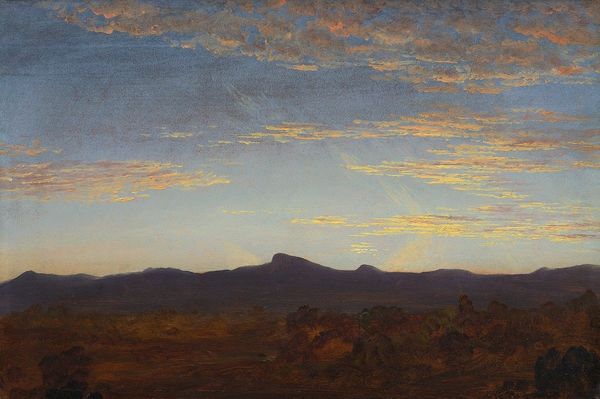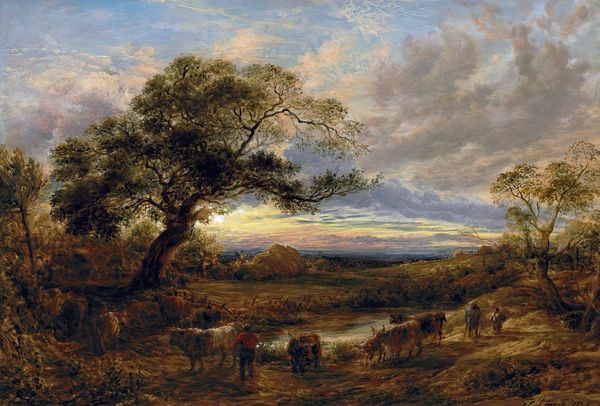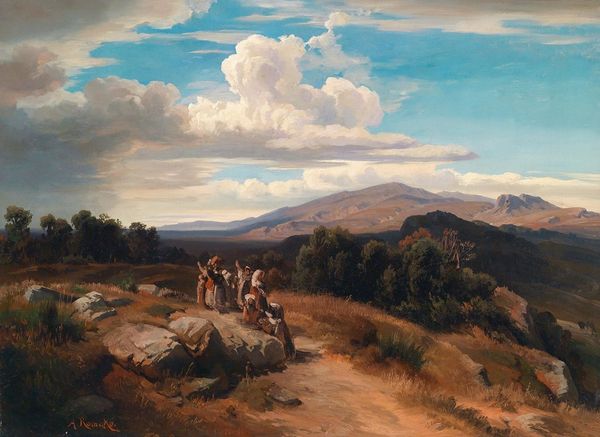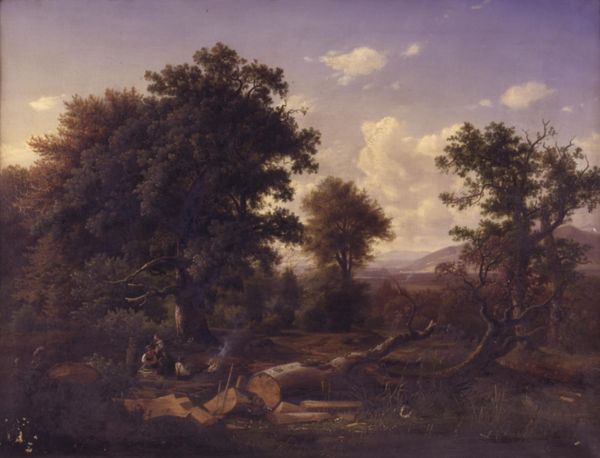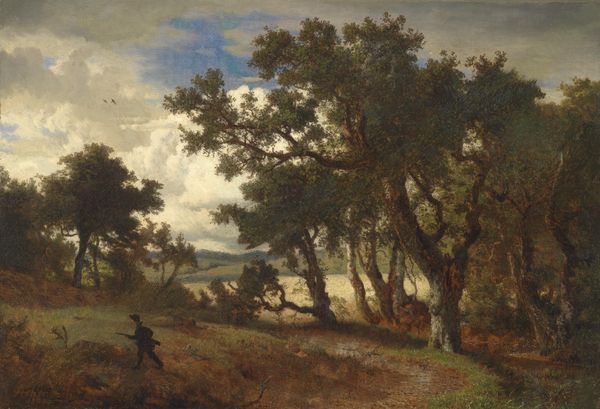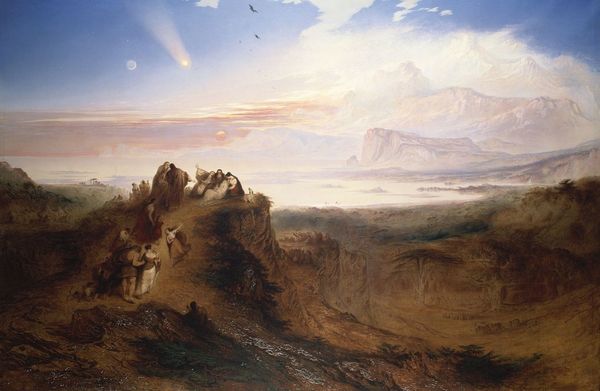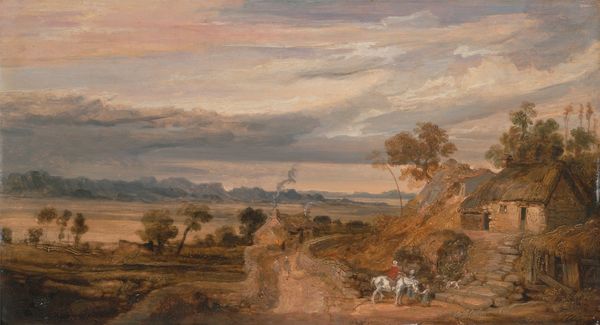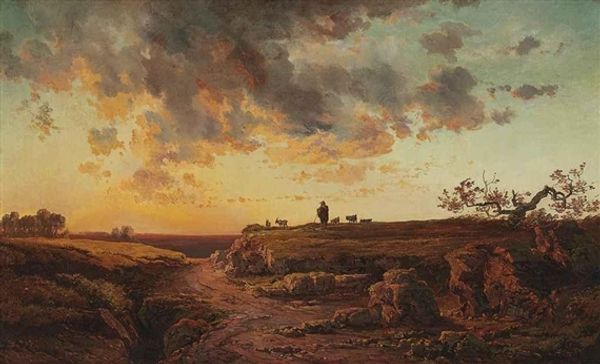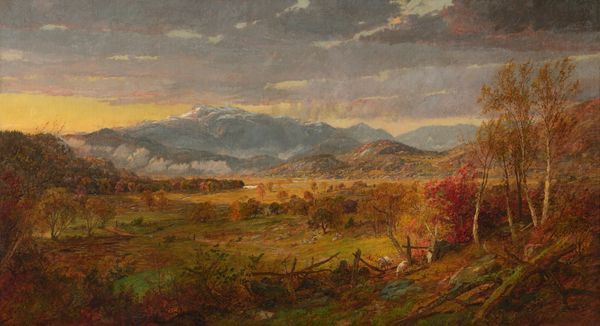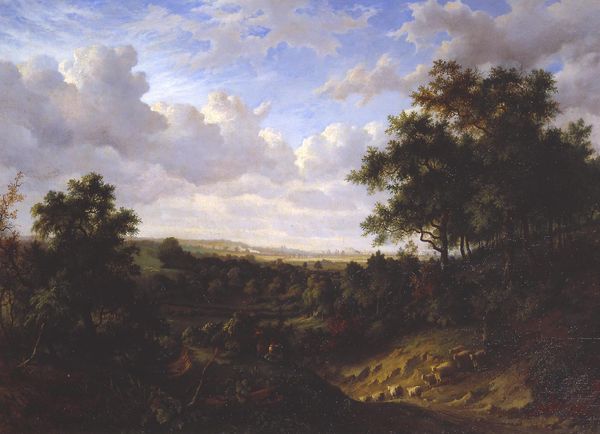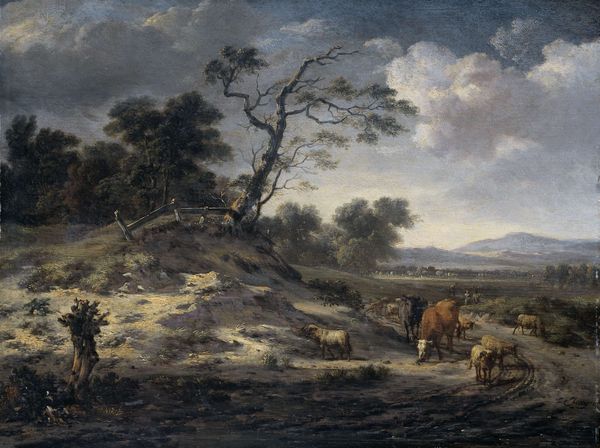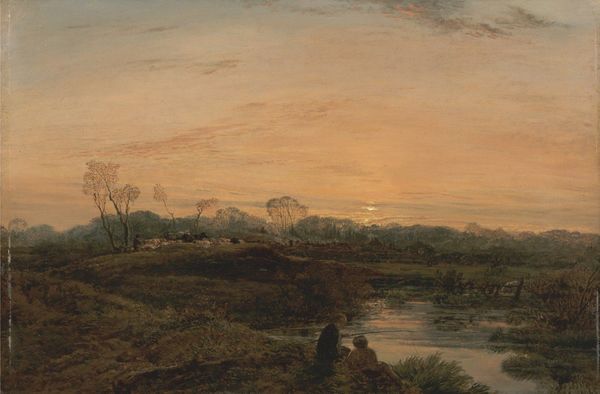
Dimensions: support: 883 x 1473 mm frame: 1305 x 1872 x 165 mm
Copyright: CC-BY-NC-ND 4.0 DEED, Photo: Tate
Curator: As you can see, this is John Linnell's "Harvest Home, Sunset: The Last Load", currently held at the Tate. Editor: The sunset dominates, doesn't it? The sky practically vibrates with those fiery colors, and the landscape seems to absorb that energy. It feels both celebratory and wistful. Curator: It does depict an idealized view of rural life, fitting with the romanticism of the era. The image of the final harvest resonates deeply within a society still tied to agricultural cycles. Editor: That golden haystack being pulled along... It's like a sun-god being paraded after a season of abundance. And those figures gathering, are they celebrating? Curator: Most likely. Linnell was very involved in the art world and used painting to express religious belief in this picture. It is an optimistic image with an idyllic setting. Editor: Yes, I see it now. A powerful image that celebrates nature, and the idea of community—a shared moment under that extraordinary sky. Curator: It is quite amazing how Linnell captures both the physical labor of farming and a sense of spiritual contentment.
Comments
tate 6 months ago
⋮
http://www.tate.org.uk/art/artworks/linnell-harvest-home-sunset-the-last-load-n02060
Join the conversation
Join millions of artists and users on Artera today and experience the ultimate creative platform.
tate 6 months ago
⋮
Linnell first met Blake in 1818 and discovered an immediate affinity with the artist. Both men considered that the natural world was a reflection of the spiritual world. They were also both proud of their working-class origins and not ready to conform to the niceties of polite society. As well as introducing potential patrons to Blake, Linnell commissioned the Job engravings and the Dante subjects, examples of which are exhibited nearby. In 1851 Linnell settled in Redhill, Surrey. The landscapes he painted in his later years, often in the vicinity of Redhill, are pastorals like 'Harvest Home', intended to evoke a golden, rural past. His contemporary reputation was based on pictures such as these, and also on his portraits. Gallery label, August 2004
